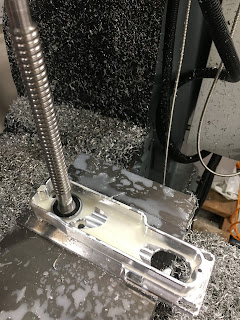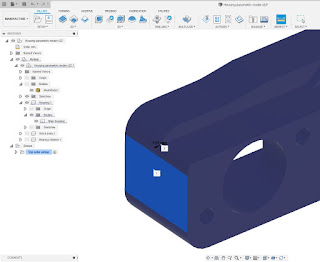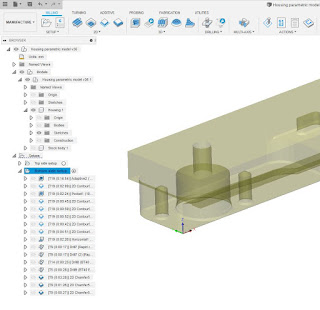I have had the Fadal ATC (auto tool changer) at the back of my mind for some time now, since I originally bought it. I need to clear the decks of other, ongoing work before embarking on loads of new stuff but nonetheless, so far I don't have a plan for integrating the machine with the Acorn controller. I'd like to have a sensible plan worked out for when the time comes.
The interface options between the Acorn and any peripheral are rather limited. With the Ether1616 expansion board, you get another 16 outputs to use for controlling the ATC but these are (very) low speed, being on the end of a chain involving an Ethernet switch and a set of relays. The latency seems to be of the order of 100ms or so. Perhaps not an issue for an ATC but there's nothing simple like Modbus / RS485 / RS232 etc.
There's a guy on the Centroid forum (mick41zxr - a biker, presumably?) who's attempting something similar. He's spotted an El Cheapo PLC (programmable logic controller) that might be persuaded to be part of the solution and is attempting to use it for controlling his ATC. Very interesting and timely.
Tell me more...
The processing power required to implement traditional PLC functionality is quite trivial compared to what is available in today's microcontrollers. So the component cost for a reasonably functional PLC based on such an approach can be significantly less than the price of a proper industrial PLC. Obviously the software cost isn't going to be trivial though.
The website for the ACE family is a bit clunky looking but it seems to have most things you'd need. It must be said, I've no previous experience of using PLCs mind.
Here's the datasheet for the ACE family.
What's inside the box?
And here's a teardown video that gives a pretty good insight into what's inside the box. There's not much there:
Seems that the micro is a Tiva™ TM4C123G microcontroller from TI. Can't pretend I've come across it before but it seems quite well specified:
- 80MHz 32-bit ARM Cortex-M4-based
- 256KB Flash, 32KB SRAM, 2KB EEPROM
- Two Controller Area Network (CAN) modules
- USB 2.0 Host/Device/OTG + PHY
- Dual 12-bit 2MSPS ADCs
- Motion control PWMs
- 8 UART, 6 I2C, 4 SPI
The outputs are simple ULN2003 Darlington arrays. These are about as simple and dumb as you can get, with no protection of any kind and limited (500mA) sink capability. But you cut your coat according to your cloth I suppose.
The software - vBuilder:
This is where the value lies. Without a decent GUI / IDE, this wouldn't be much use to man nor beast. Here's the web page for the vBuilder installation.
And there are a few (not so many) Pootube videos showing example programs.
I found that my Dell XPS15 got into trouble once I'd set up a project and entered editing mode, at which point vBuilder would shrink down into a tiny window with unreadably small text size. As my mother had warned me, years of self abuse took a toll on my eyesight with the result that I can't cope with this. This window behaviour is something to do with the program not being able to handle high resolution displays in Windows 10. The solution is to play with the compatibility settings for the program (RMB on the shortcut, select properties, select "Compatibility" tab, then "Change Hi DPI settings". I think I just checked the second check box).
Next up - try out a few examples in vBuilder...







































